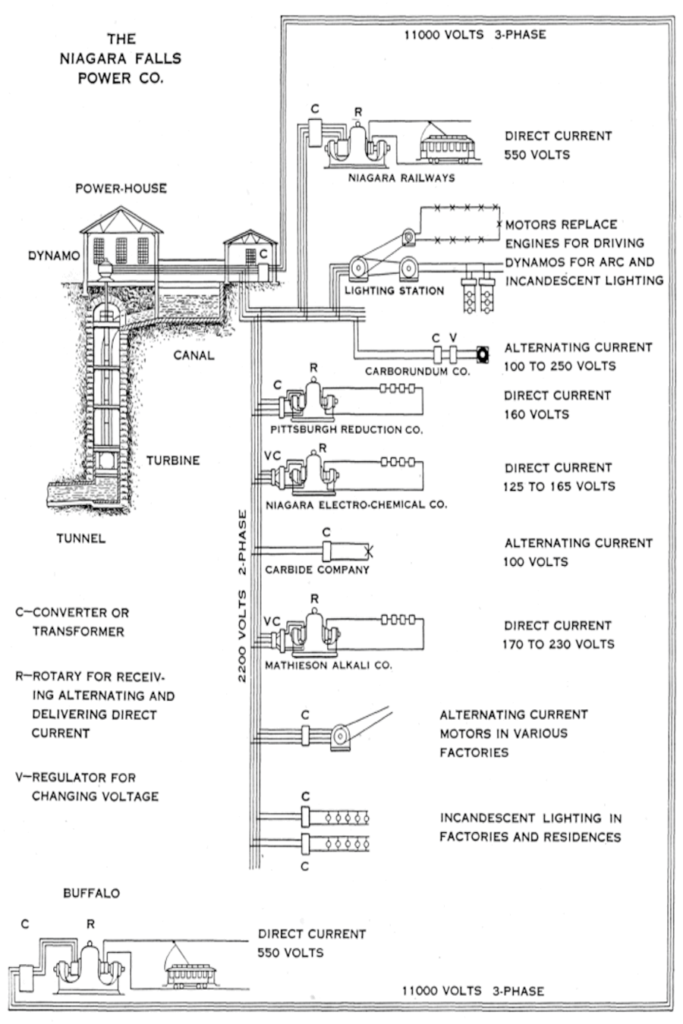 The diatribe, born at the end of the nineteenth century, between Edison and Westinghouse on the opportunity to distribute electricity in direct current, rather than alternating, ended with the universal acceptance of alternating current as a vector of electricity on short and long distances.
The diatribe, born at the end of the nineteenth century, between Edison and Westinghouse on the opportunity to distribute electricity in direct current, rather than alternating, ended with the universal acceptance of alternating current as a vector of electricity on short and long distances.
This choice made it possible to use transformers to increase the voltage coming from the generators and therefore to reduce, at the same power transmitted, the value of the current and consequently the losses in the conductors.
The discovery of the rotating magnetic field by Galileo Ferraris and the improvement made by Nikola Tesla, allowed to use asynchronous motors to replace the first ever-less reliable and more perishable engines.
Even today, after 150 years, electricity management is carried out using the same principles and the same functions.
Transformers are improved in the quality of materials to reduce losses, while converters use only static elements to replace the less reliable and expensive rotating ones.
Our company is able to analyze, design and build equipment for the transformation and conversion of electricity in the field of power ranging from a few hundred Watts up to about 200 kW using the most modern technologies available on the market in average and low voltage.


